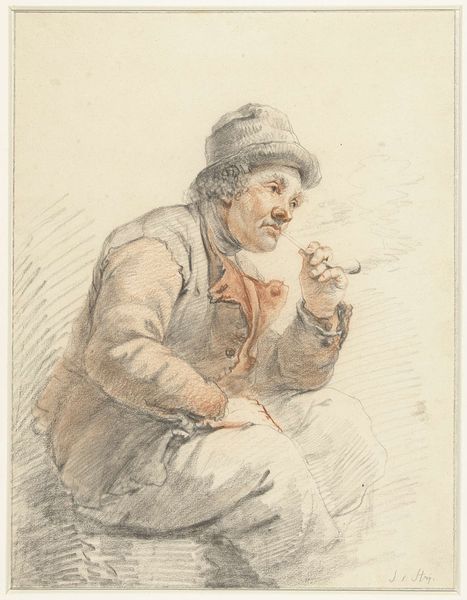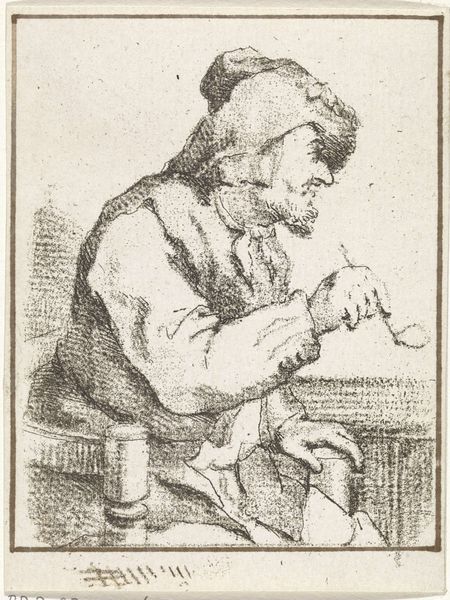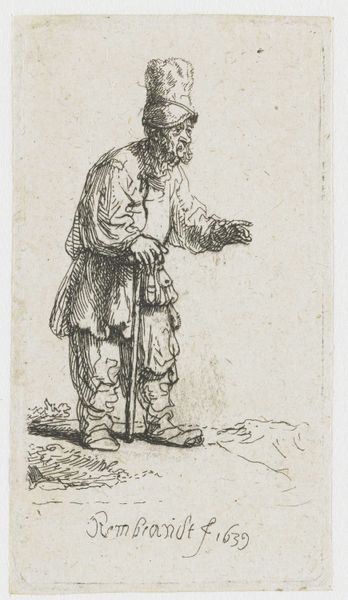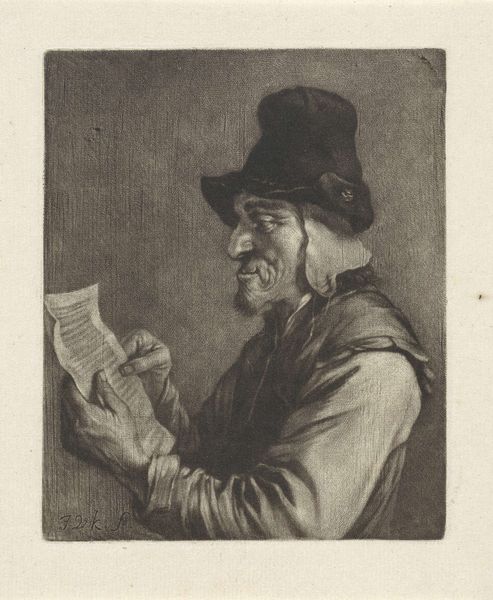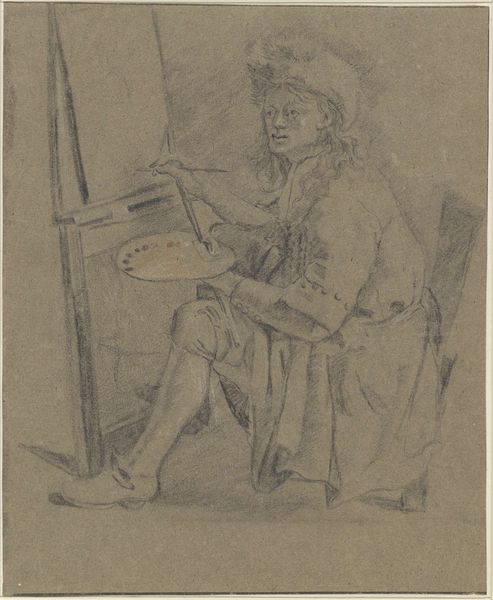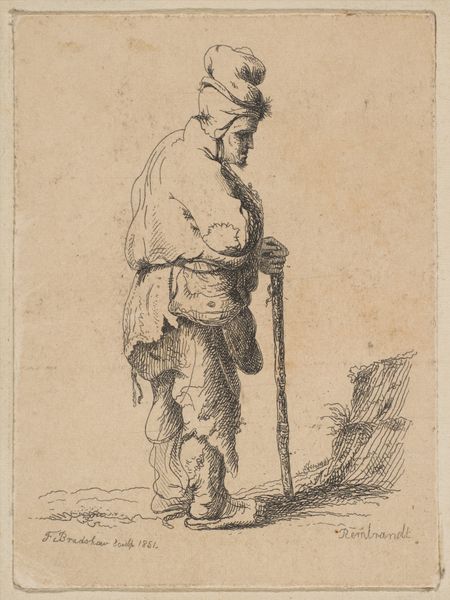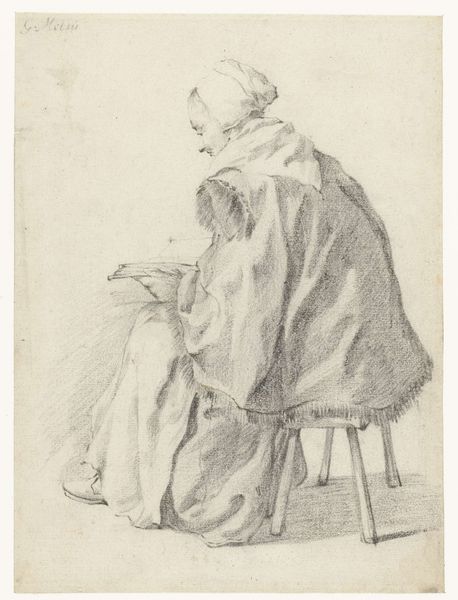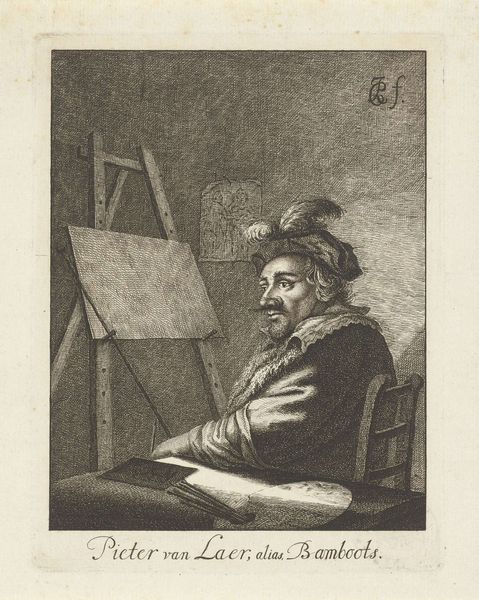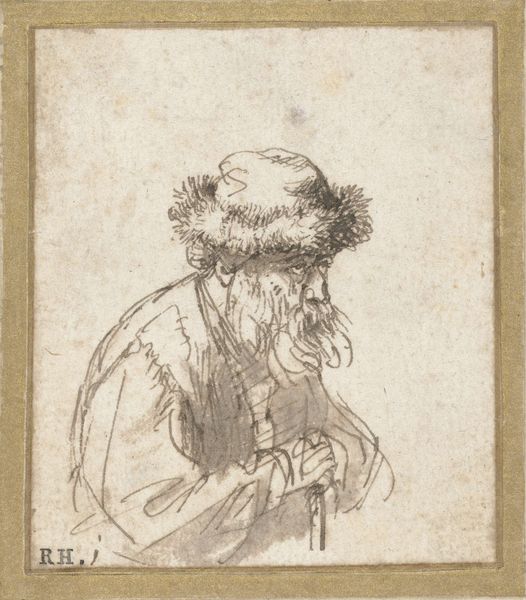
drawing, pencil, pen, charcoal
#
portrait
#
pencil drawn
#
drawing
#
self-portrait
#
dutch-golden-age
#
pencil sketch
#
landscape
#
charcoal drawing
#
pencil drawing
#
coloured pencil
#
pencil
#
pen
#
charcoal
#
watercolor
Dimensions: height 230 mm, width 194 mm
Copyright: Rijks Museum: Open Domain
Editor: This drawing, "Self-Portrait Behind the Easel" by Abraham van Strij, dates from around 1763-1826. It's rendered in pencil, charcoal, and pen, and what strikes me is the artist’s focused gaze. What compositional elements do you find most compelling? Curator: The structural interplay between the artist and his artistic tools intrigues me. Note how the easel forms a geometric frame, both containing and presenting the artwork in progress. Editor: Yes, the easel’s sharp angles contrast with the softer lines of the figure. Curator: Precisely. And observe the subtle variations in line weight. The artist employs darker, more defined lines for his own likeness, thus drawing our eye towards him, the creator, and a thinner, sketchier style to depict the figures in the paintings and the room. What might this signify? Editor: Perhaps it emphasizes the artist’s presence versus the world of his art, which is always mediated? Curator: An interesting idea. Consider also the distribution of light and shadow, and how that affects the figure's face, giving him such intense emotion. The face itself appears to be the focal point because of the emphasis of lines around his eyes. Editor: It’s a brilliant manipulation of light and line! I see how those artistic choices dictate the viewers' experience. Thank you for the explanation. Curator: My pleasure. Close visual examination offers so much. There's always more to discover through meticulous formal analysis.
Comments
No comments
Be the first to comment and join the conversation on the ultimate creative platform.
